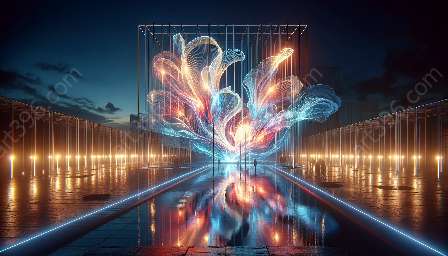Light art has long captivated audiences with its mesmerizing displays that utilize illumination to create immersive experiences. However, with the advancement of digital media, the interaction between light art and technology has opened up new avenues for artistic expression and innovation.
In this comprehensive exploration, we will delve into the historical context of light art, tracing its evolution and significance. We will also examine the impact of digital media on the development of light art, shedding light on the intricate relationship between these two forms of artistic expression.
The History of Light Art
Light art traces its roots back to the early 20th century, with artists experimenting with light as a medium for artistic creation. The use of light as an expressive tool gained momentum during the 1960s and 1970s, as artists sought to challenge traditional artistic norms and engage with new forms of expression.
Notable pioneers of light art, such as James Turrell, Dan Flavin, and Olafur Eliasson, have pushed the boundaries of what is possible with light, creating captivating installations that blur the lines between art and the surrounding environment. These artists have paved the way for the exploration of light as a central component of artistic compositions, giving rise to a rich and diverse heritage within the realm of light art.
Light Art: A Window into Technological Innovation
As digital media and technology have advanced, artists have embraced these tools to expand the possibilities of light art. The interplay between light and digital media has enabled artists to create dynamic, interactive installations that respond to the movements and engagement of audiences, transforming static artworks into immersive experiences.
Technological advancements have also fueled the development of new forms of light art, such as projection mapping, augmented reality, and interactive light sculptures. These innovative approaches harness the power of digital media to engage with viewers in unprecedented ways, blurring the boundaries between the virtual and physical worlds.
Embracing the Digital Canvas
With the advent of digital platforms, artists have found new avenues to disseminate their light art to a global audience. Digital media has provided a platform for artists to showcase their work, reaching individuals across the globe and transcending the limitations of physical exhibition spaces.
Through social media, virtual galleries, and online platforms, artists can share their light art with diverse audiences, fostering a sense of interconnectedness and community engagement. This digital landscape has not only democratized access to light art but has also facilitated collaborations and cross-disciplinary interactions, leading to a rich exchange of ideas and techniques.
Shaping the Future of Light Art
As the interplay of light art and digital media continues to evolve, the boundaries of artistic expression are continuously expanding. By harnessing the power of technology, artists are breaking new ground, pushing the frontiers of creativity and engaging with audiences in novel ways.
From large-scale outdoor spectacles to intimate gallery installations, the fusion of light art and digital media is reshaping the artistic landscape, offering new possibilities for immersive experiences and sensory engagement. As society becomes increasingly intertwined with digital technologies, the potential for light art to resonate with audiences on a global scale is greater than ever before.

